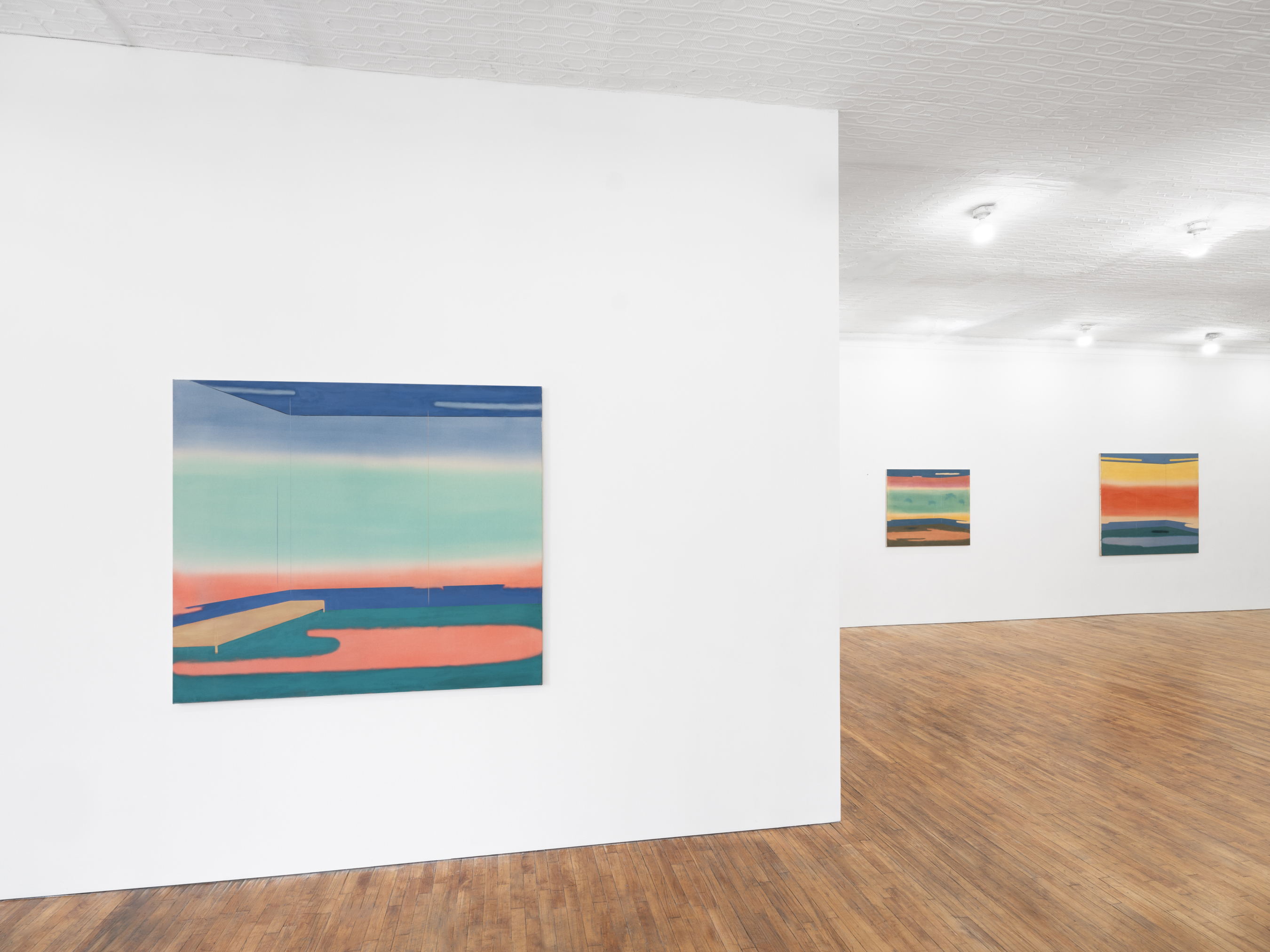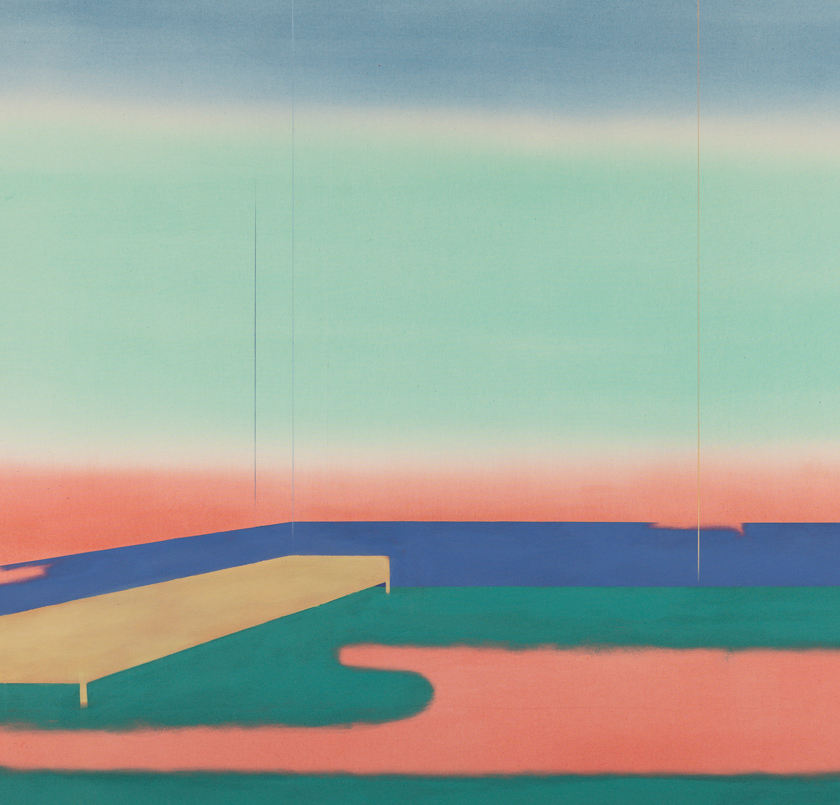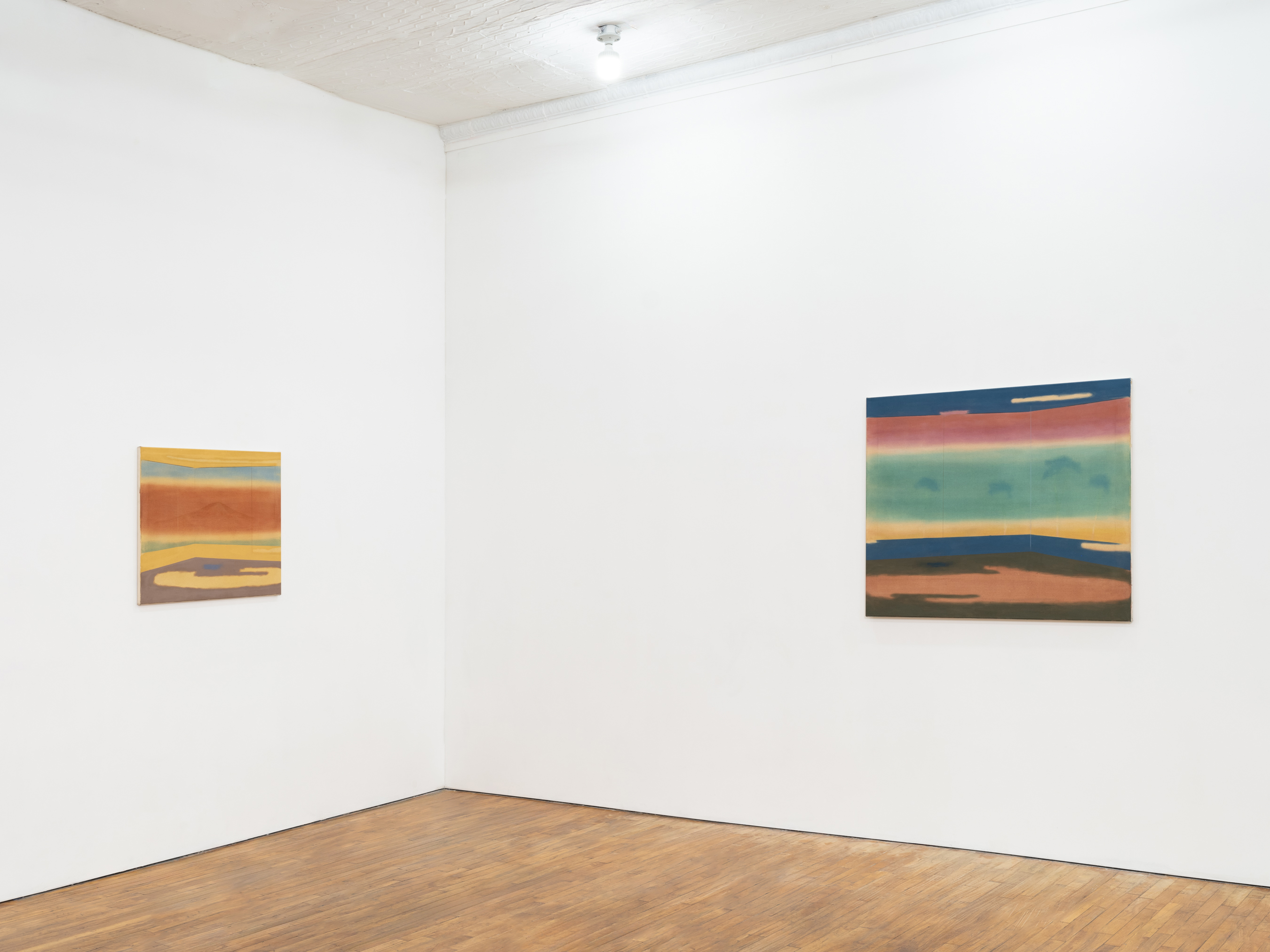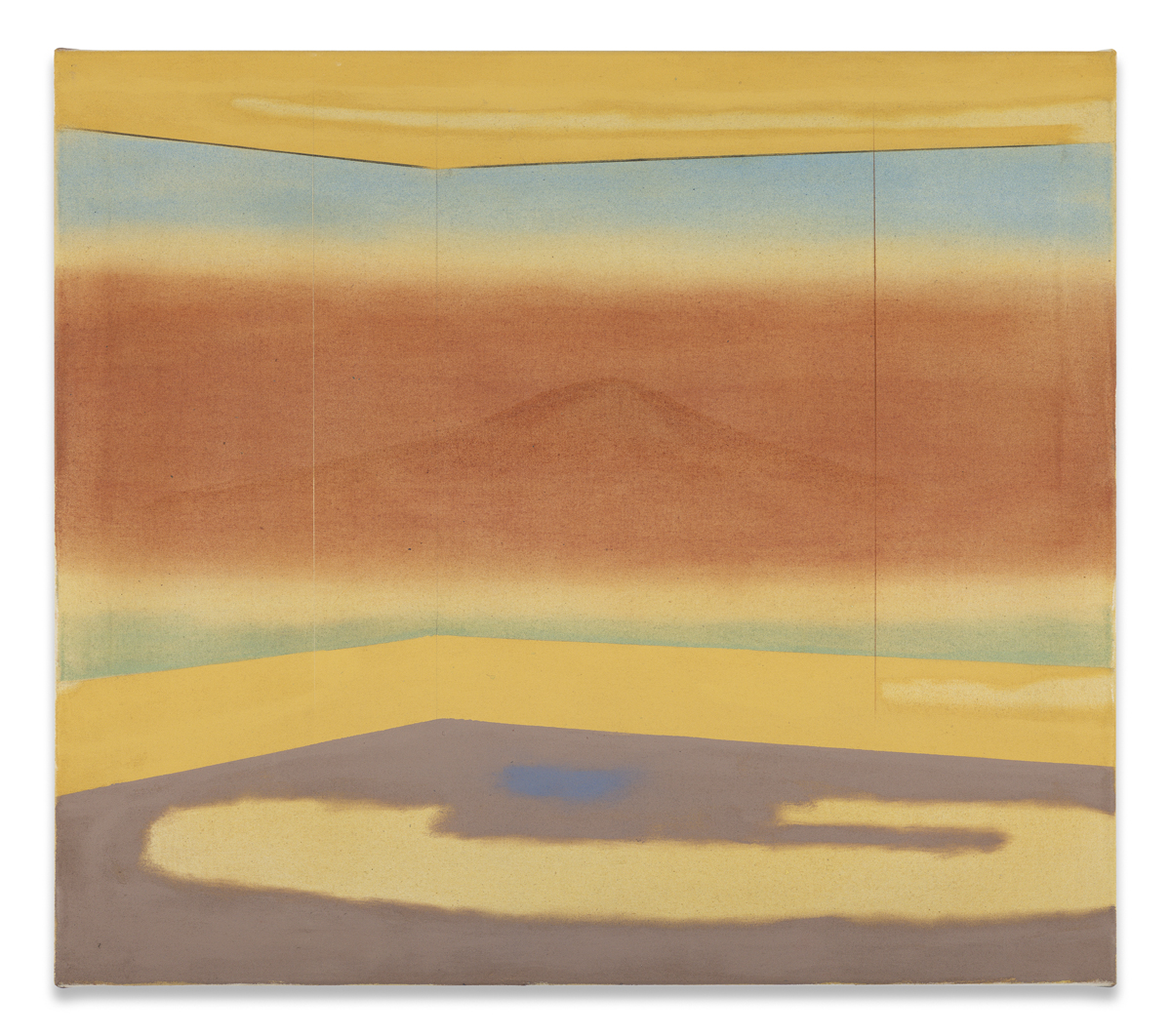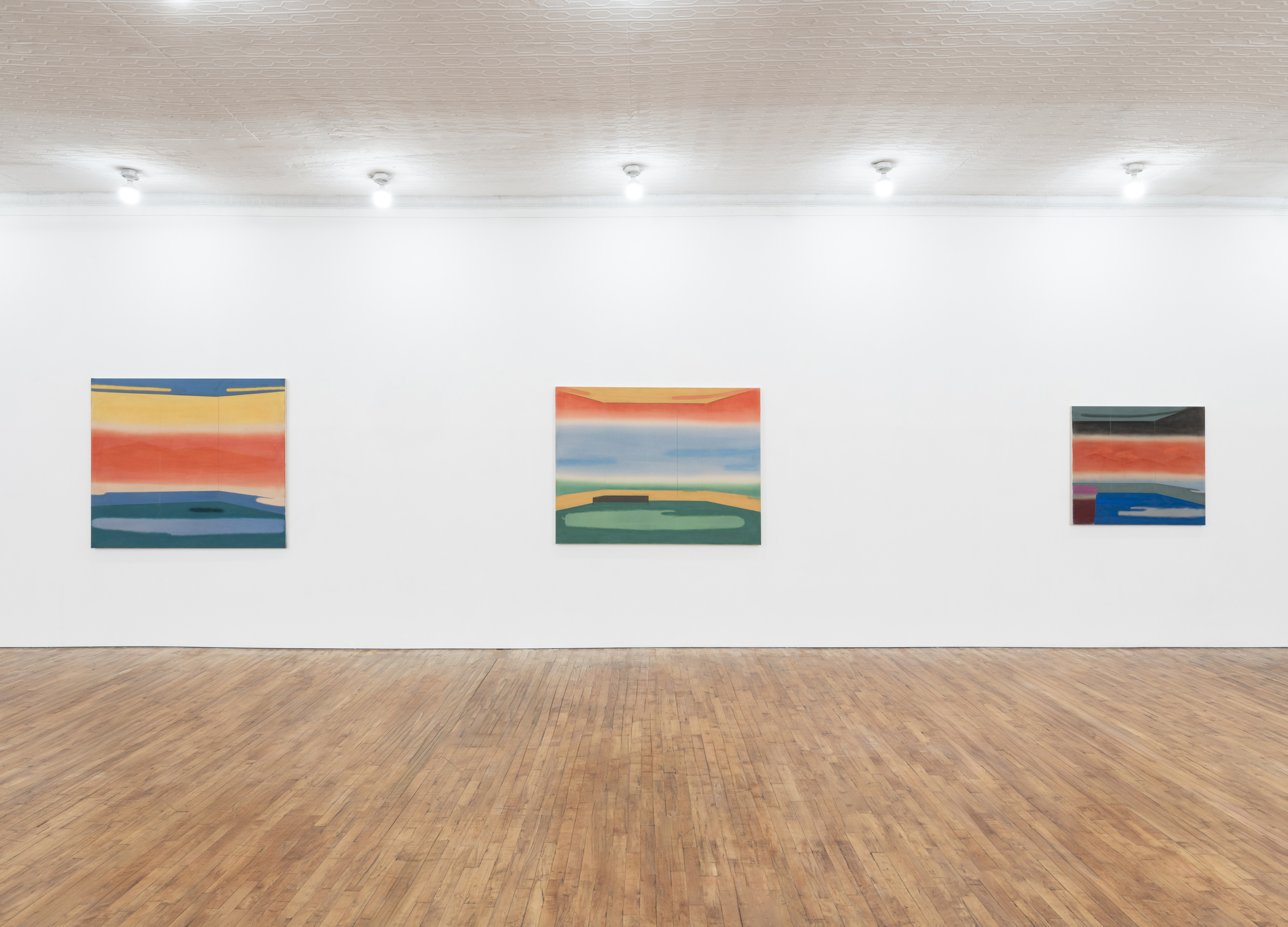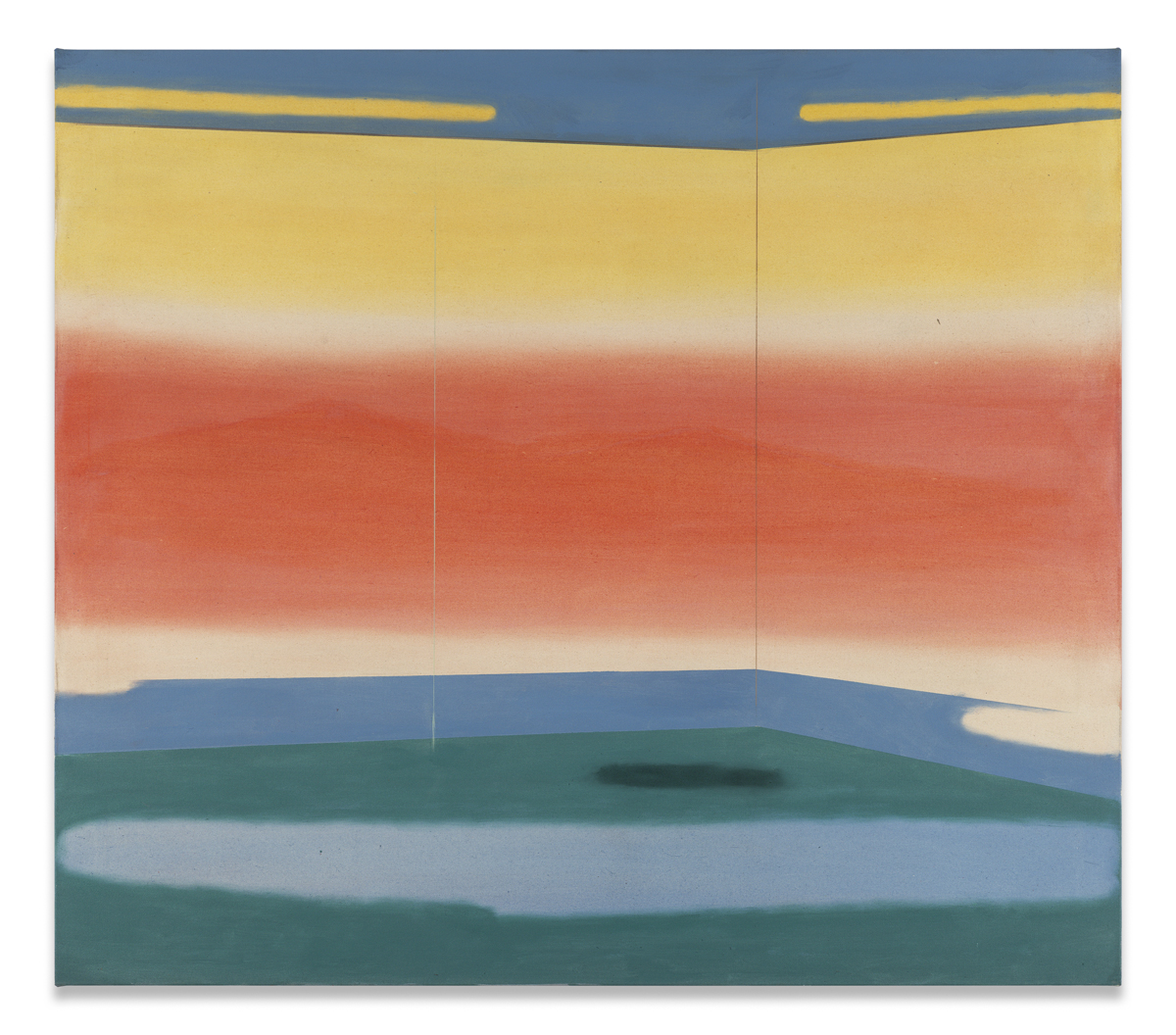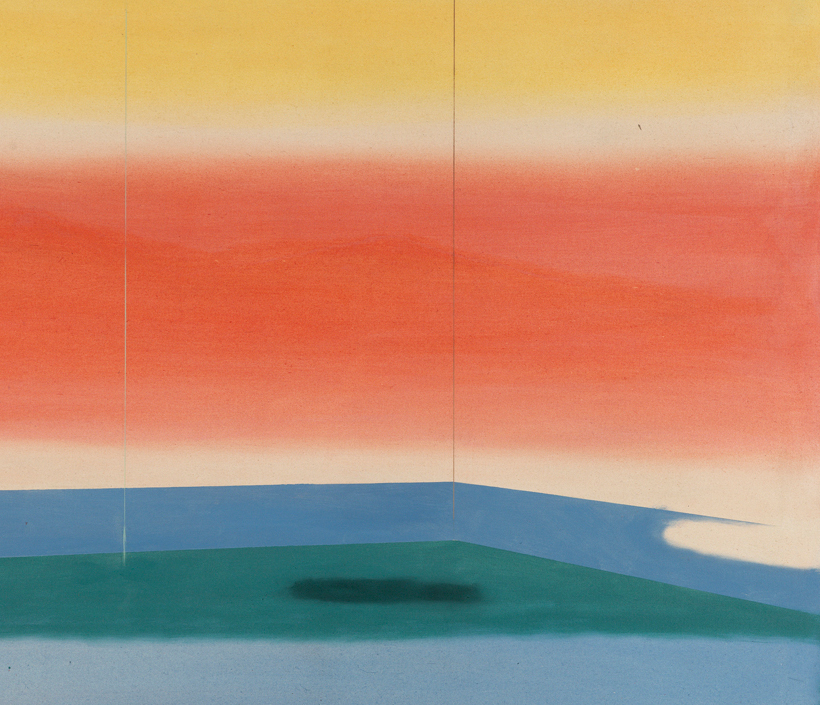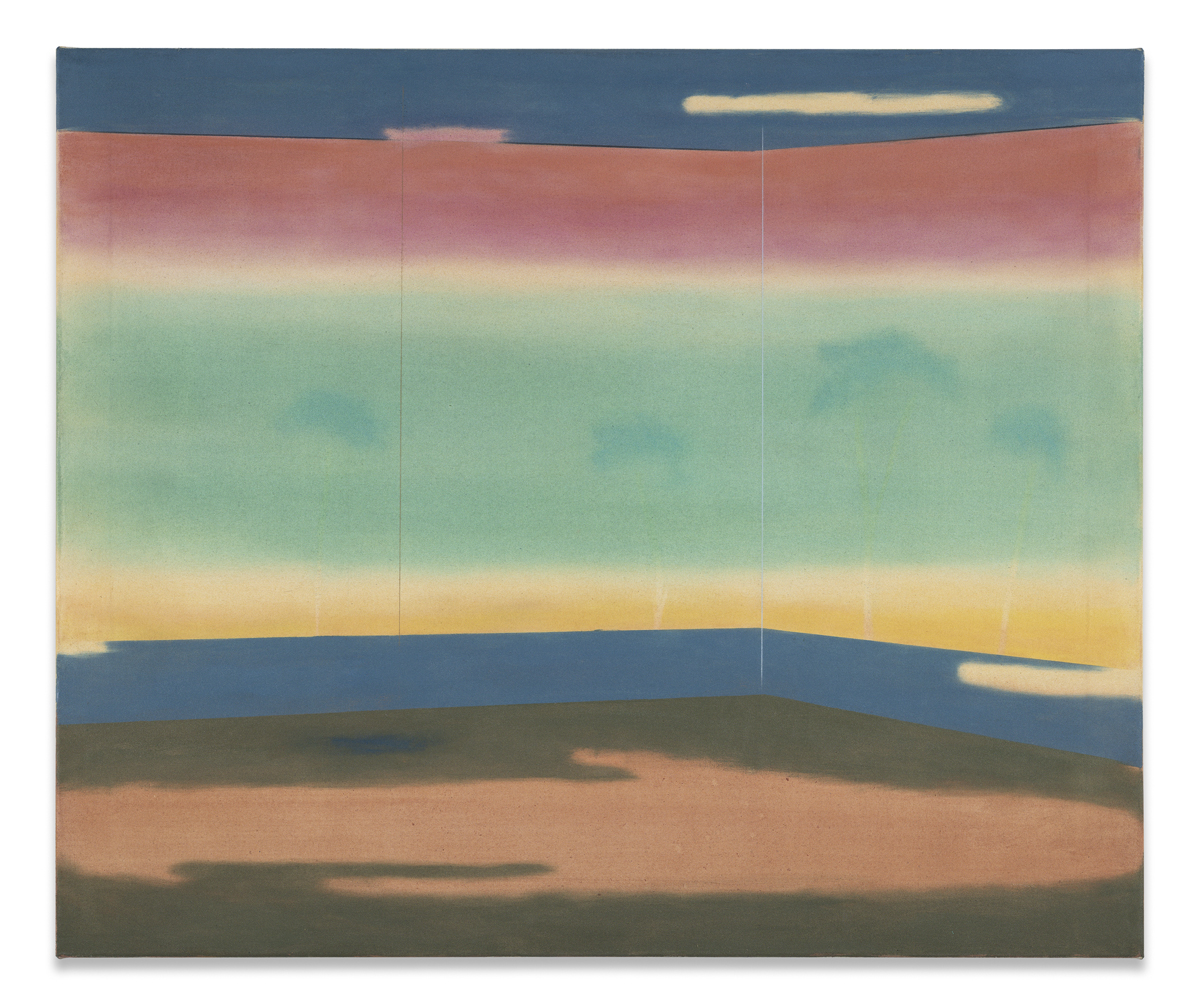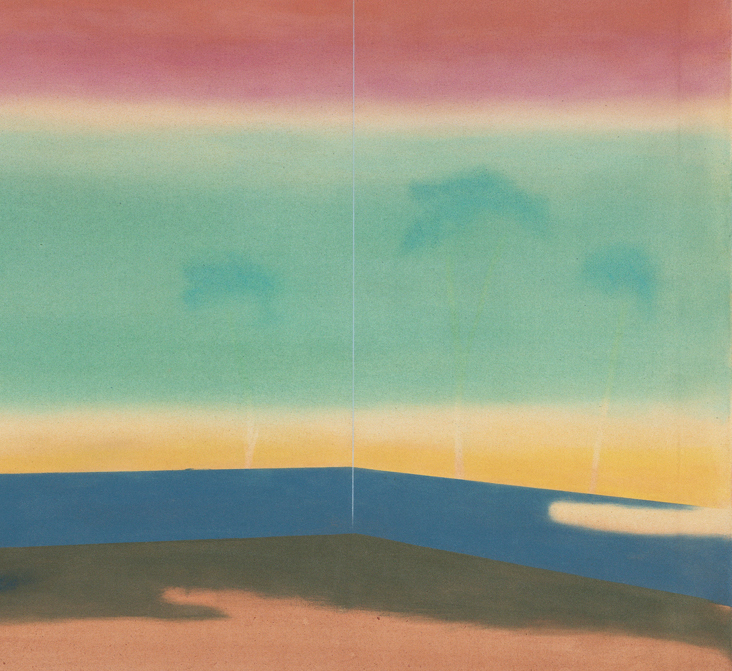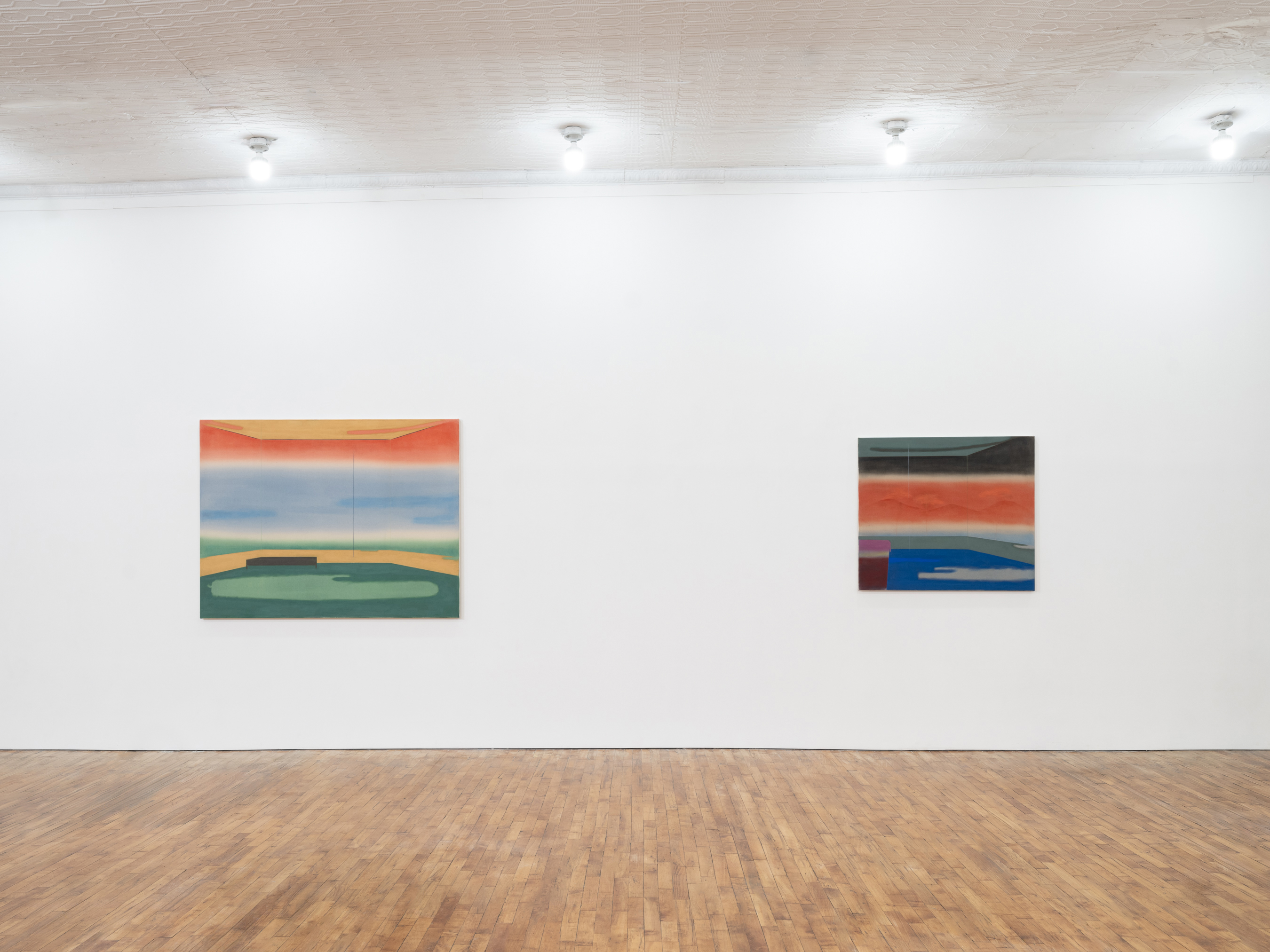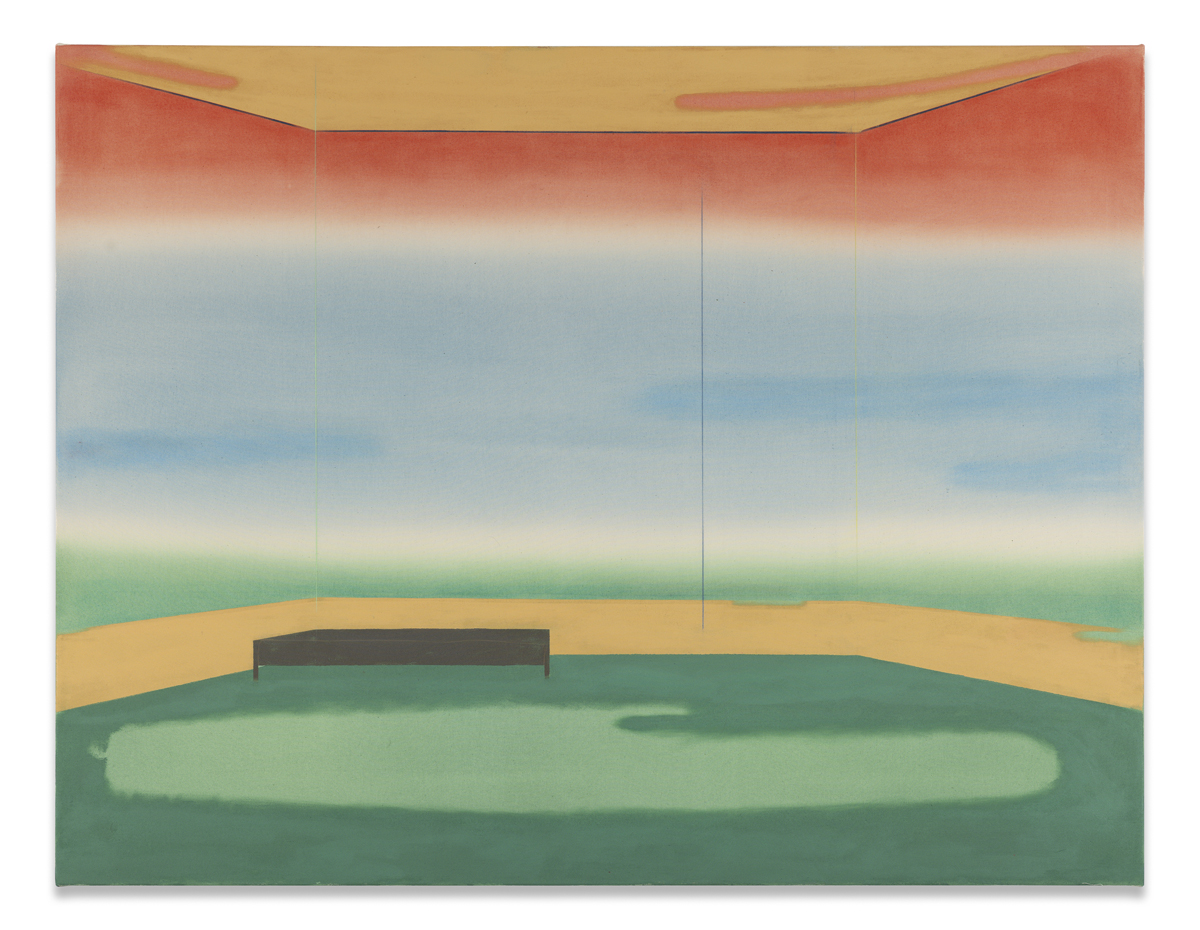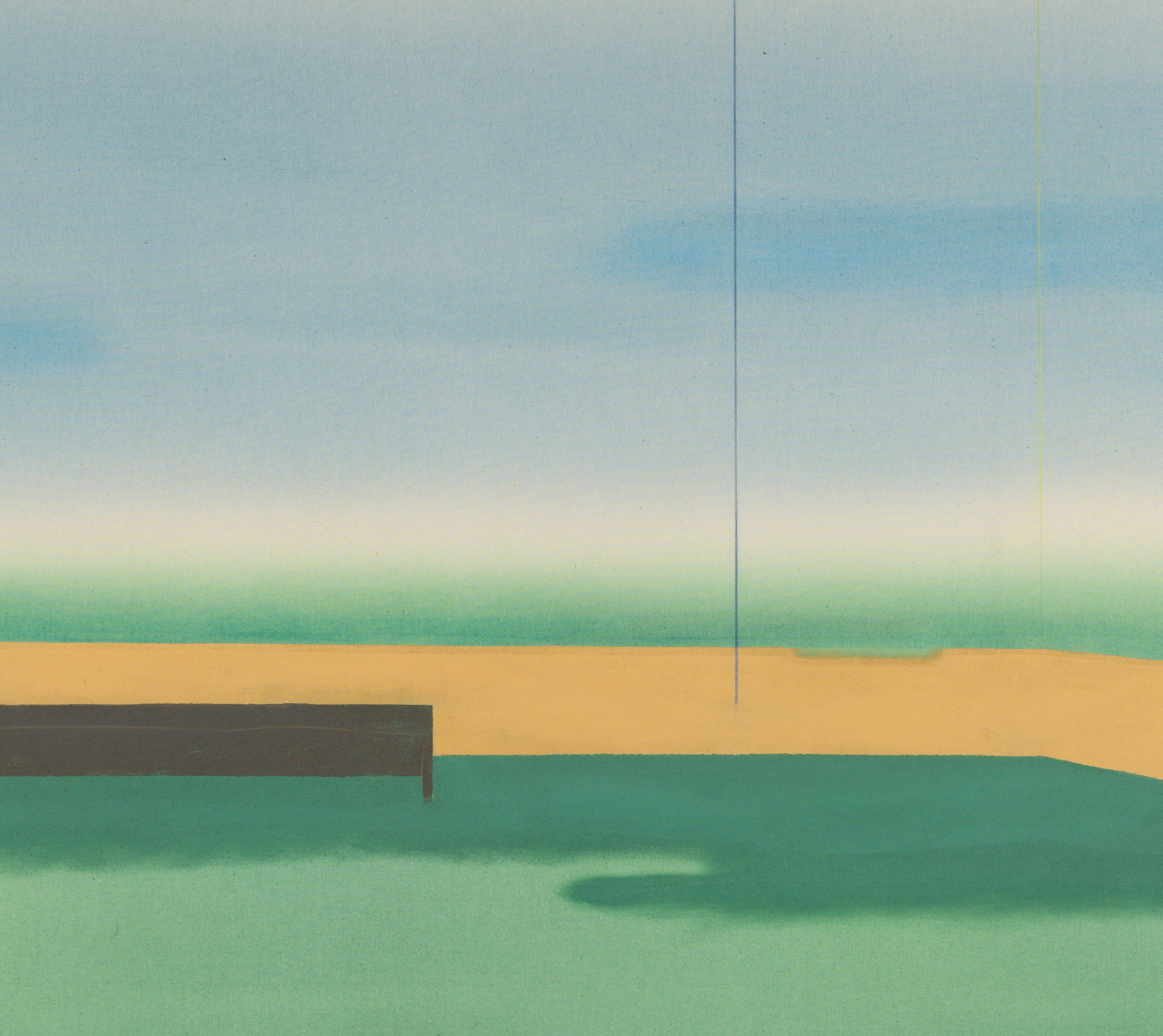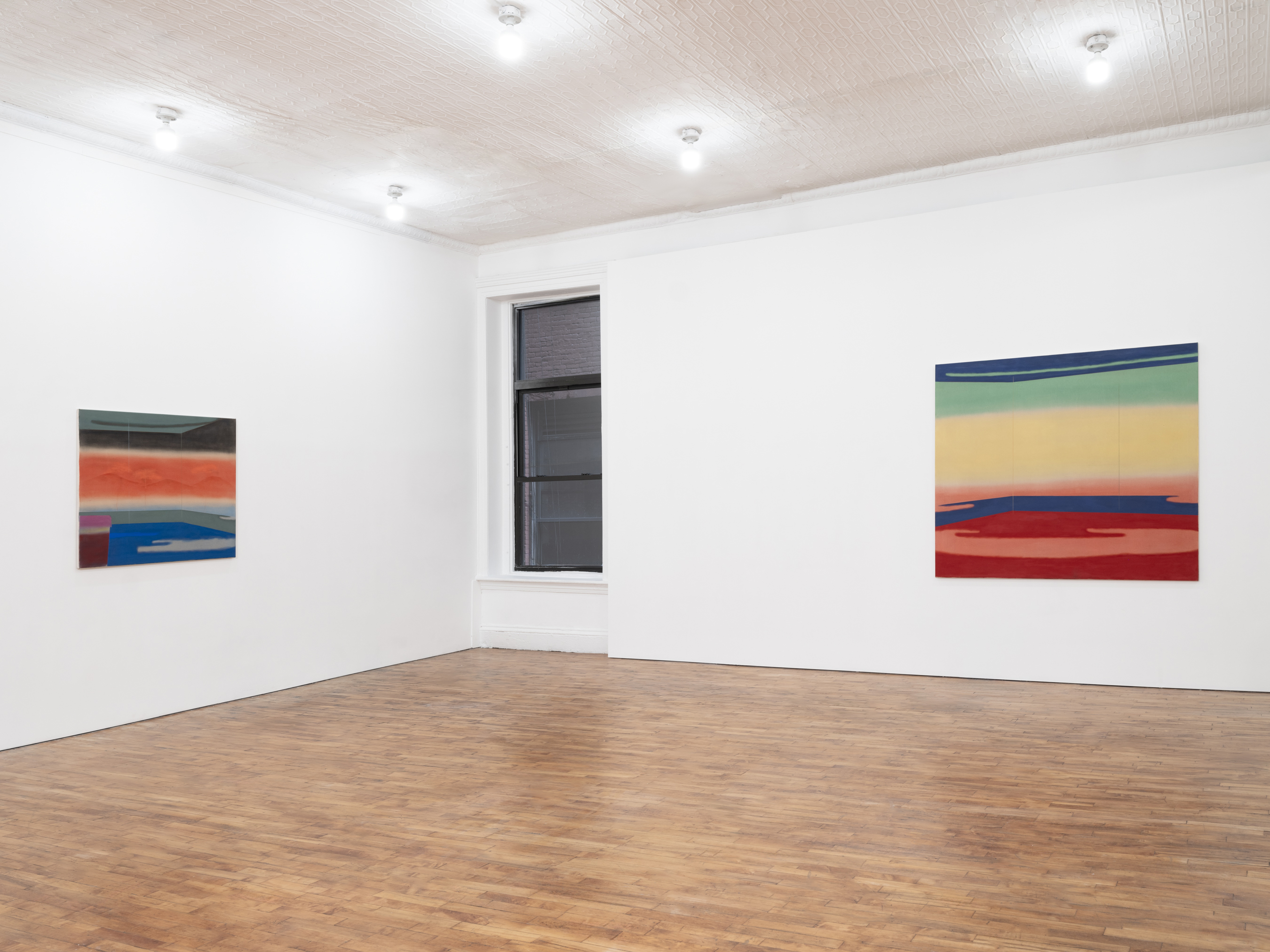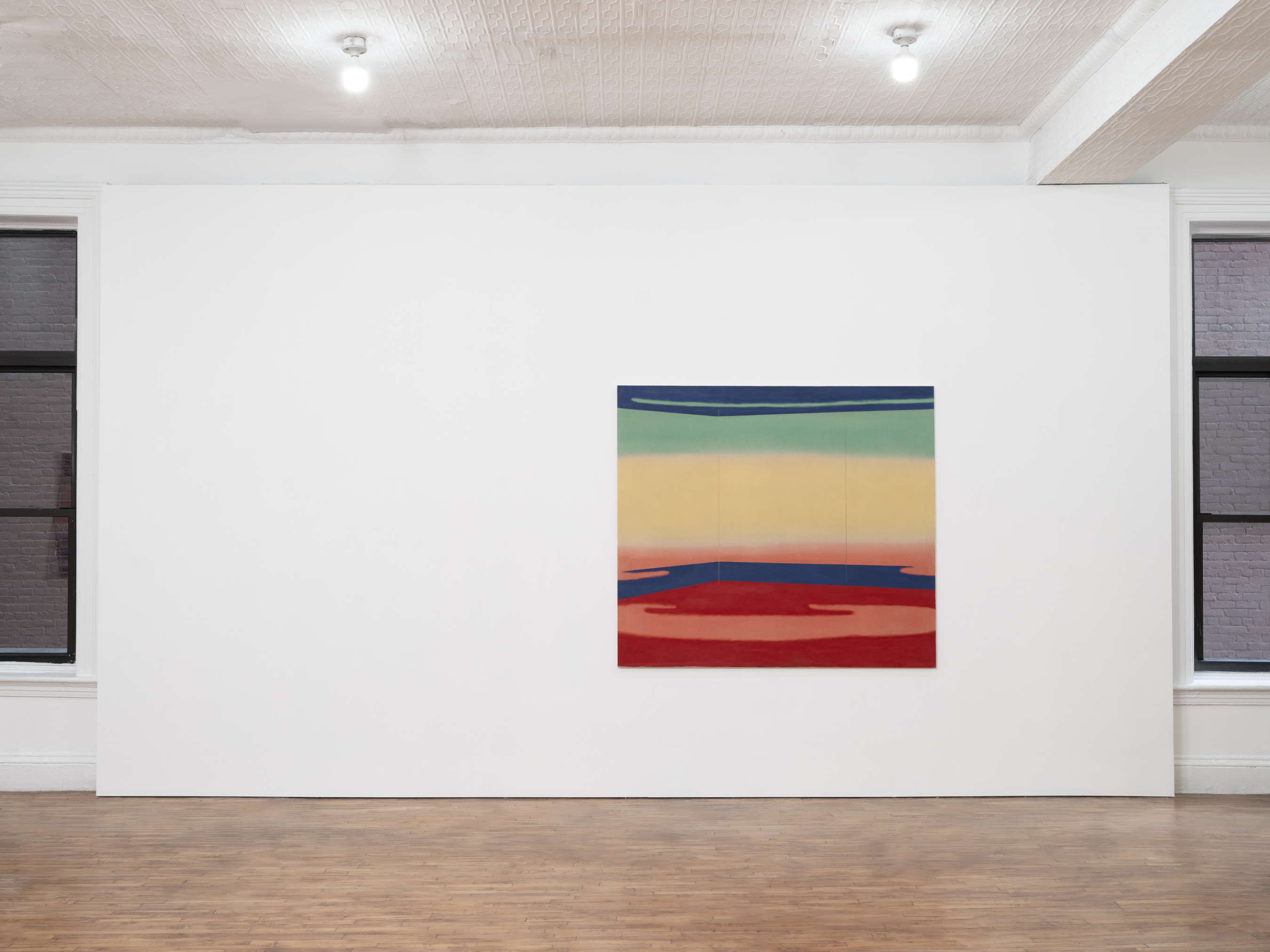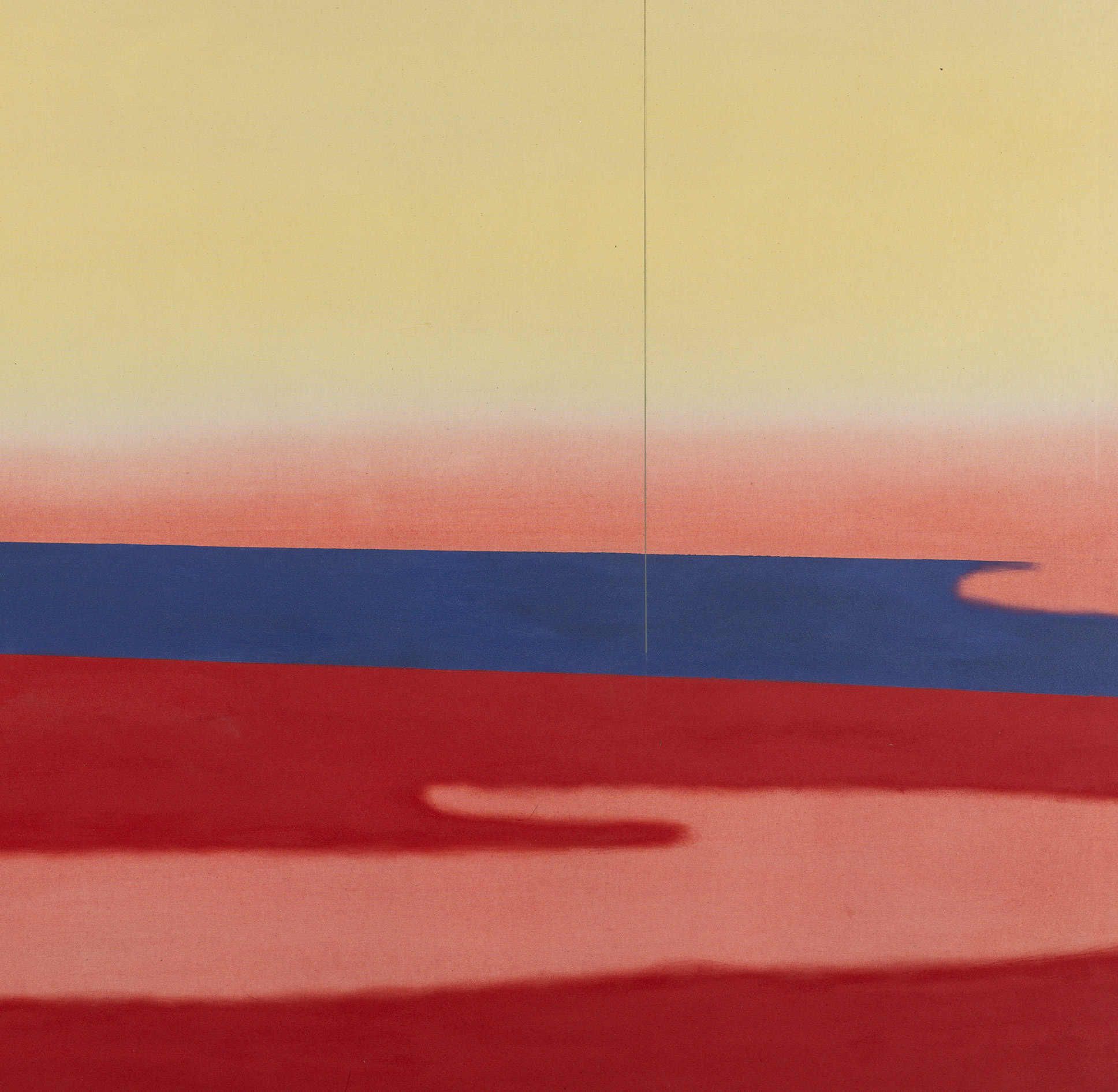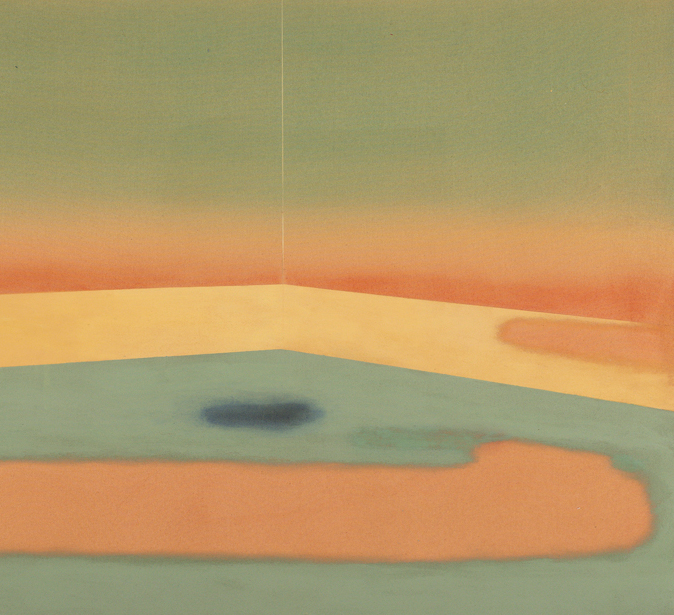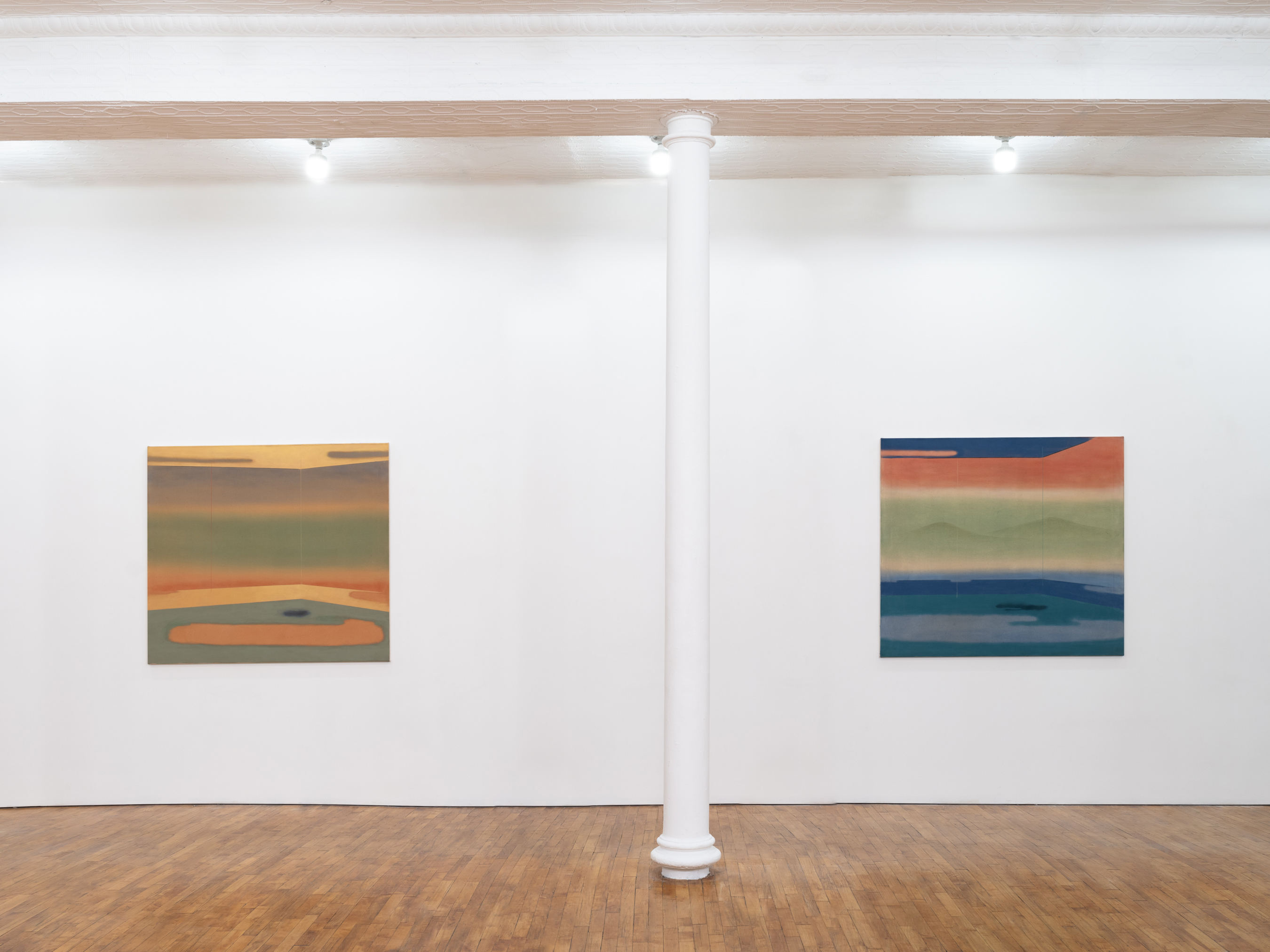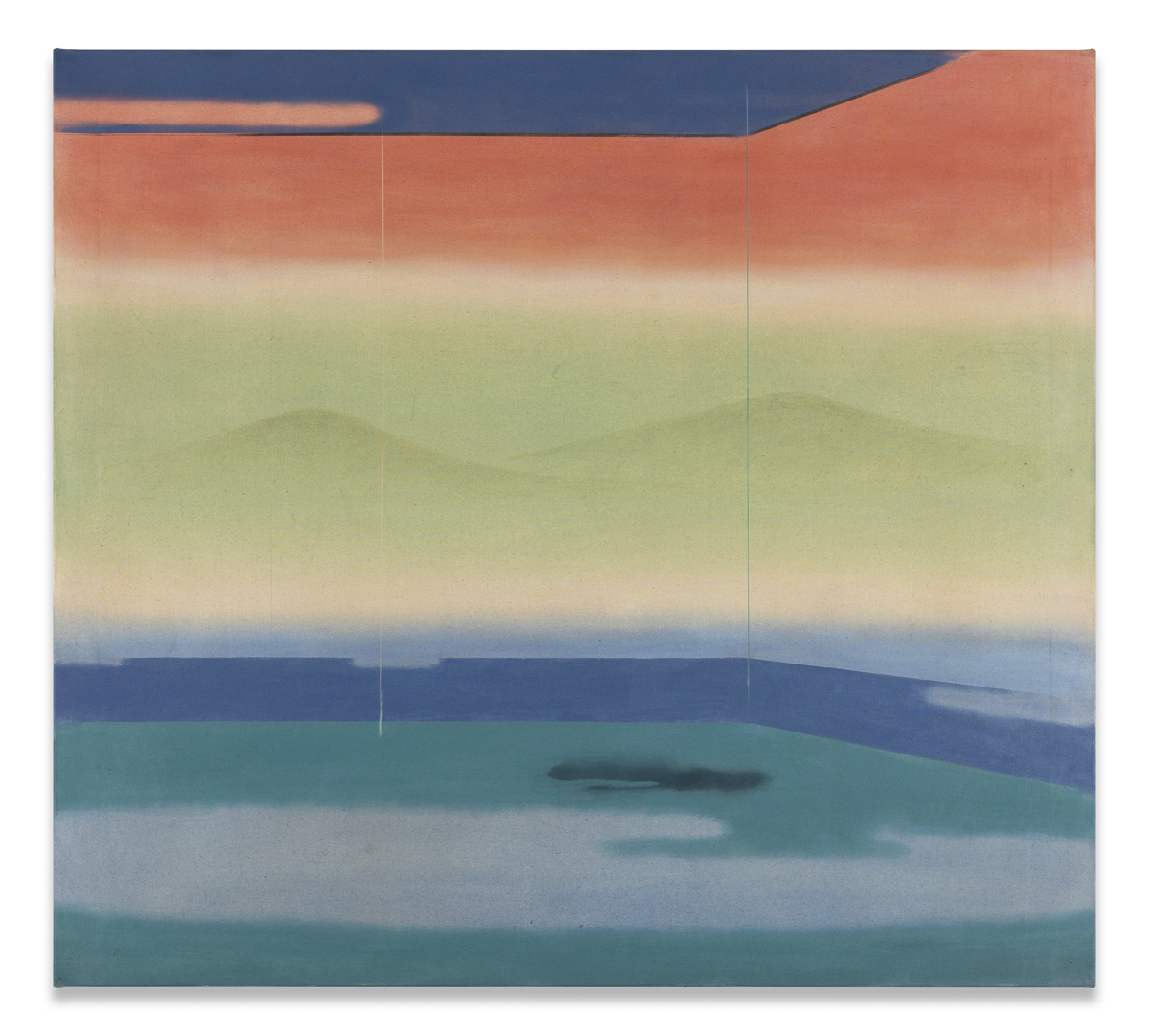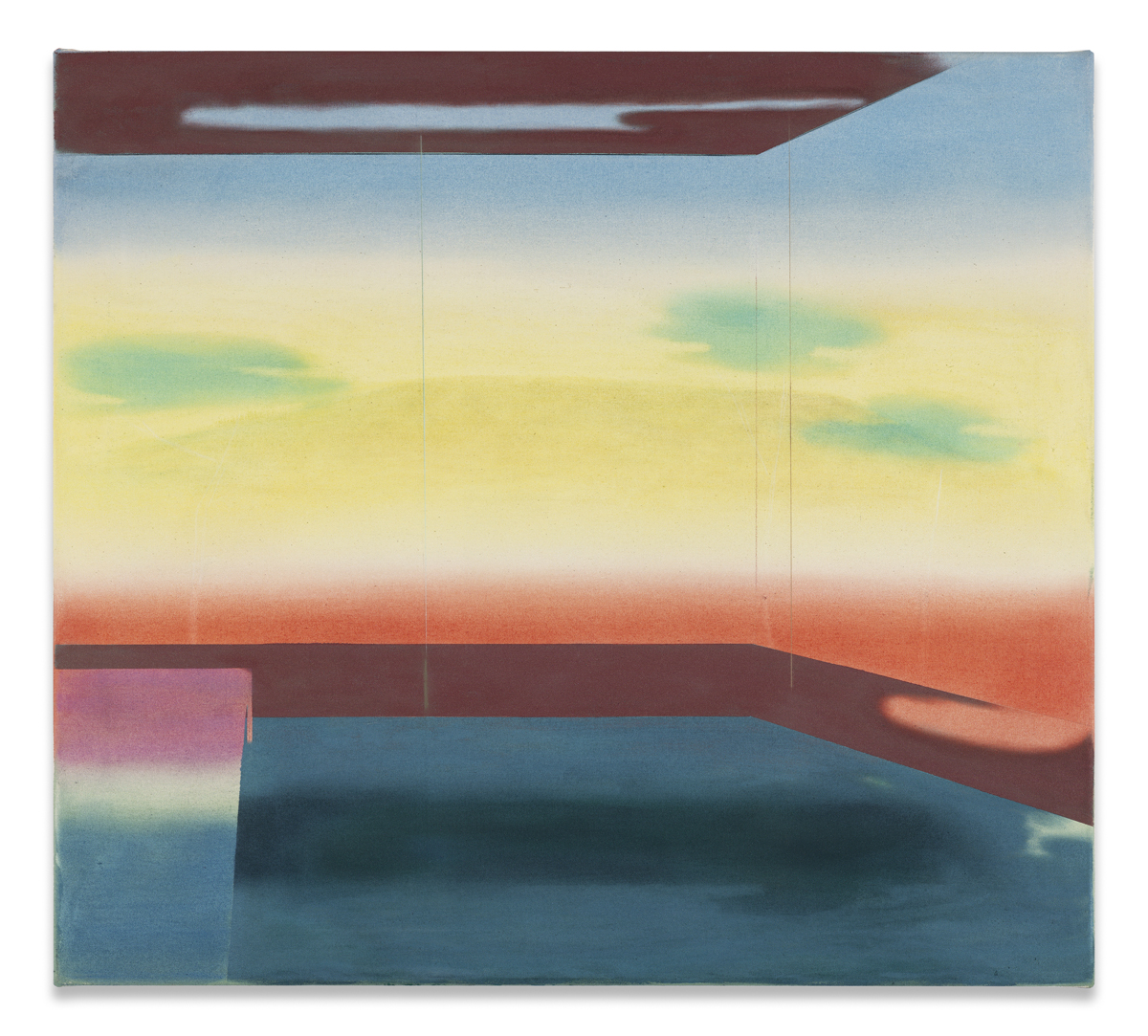In Annabell Häfner’s second exhibition at Tara Downs, the world has become a continuation of non-places, defined by their lack of familiarity or identifying features. In her largest-scale works to date, Häfner implicates the viewer in expansive and liminal spaces, drawing upon the anthropologist Marc Augé’s concept of the non-place, a supermodern phenomenon where the particularities that differentiate location have all but disappeared, conferring a sense of temporal dislocation. Across the show, scenes repeat, each painting a film still in a dreamlike, nondescript montage. The only real distinctions are in the moods that wash over the viewer as they shift without friction from image to image, much as we do from one place to another in contemporary reality.
The paintings are studies in drift and dissipation, anchored by hard objects and structuring lines of materiality. The gaze drifts about in a hazy atmosphere, barely noting the hints of windows, the suggestion of a ceiling. Sight is dominated by soft slopes and low-lying clouds, shallow ponds and flat rocks, then the realization slowly comes that one is behind glass walls. As Häfner notes, “In these spaces, a yearning for presence, belongingness, and self-reflection emerges—an aspiration for a sanctuary, a safe space, and an escape.” The affect of the paintings are colored by that desire for place-making, for a true haven where we are rescued from the anonymity endemic to our contemporary architectural environment. In her works, a reprieve is expressed in the faint images of nature. In this utopian setting, we are reminded of the experience of the natural as a palliative for the spirit amidst the constant imposition of so many thin walls.
Within these vistas, the assertion of a color field is made gentle by the softening effects of chalk. territories of color blur, jurisdiction is tentative. There’s an impression of potential movement, so that if one looks away and then looks back, the boundaries could have shifted imperceptibly. The slipping gradients resemble the backgrounds of Japanese woodblock prints, as in ukiyo-e landscapes of Utagawa Hiroshige. Häfner’s palette is akin to that of Helen Frankenthaler’s in the intelligent way colors are paired with each other. Harmonious, yet unexpected; satisfying but still challenging. While the tones themselves are enough to attract the viewer, it’s the depth that maintains hold. The paint is applied through a process of accumulation, the color becoming more of itself with each layer. Forgoing primer, the paint travels freely and assumes its own form, the watery color washes sink deeper into the fabric of the canvas, creating a depth that gives the illusion one could sink a hand into the painting. Perhaps the viewer wills that possibility, wishing to be totally absorbed into Häfner’s sublime world.
